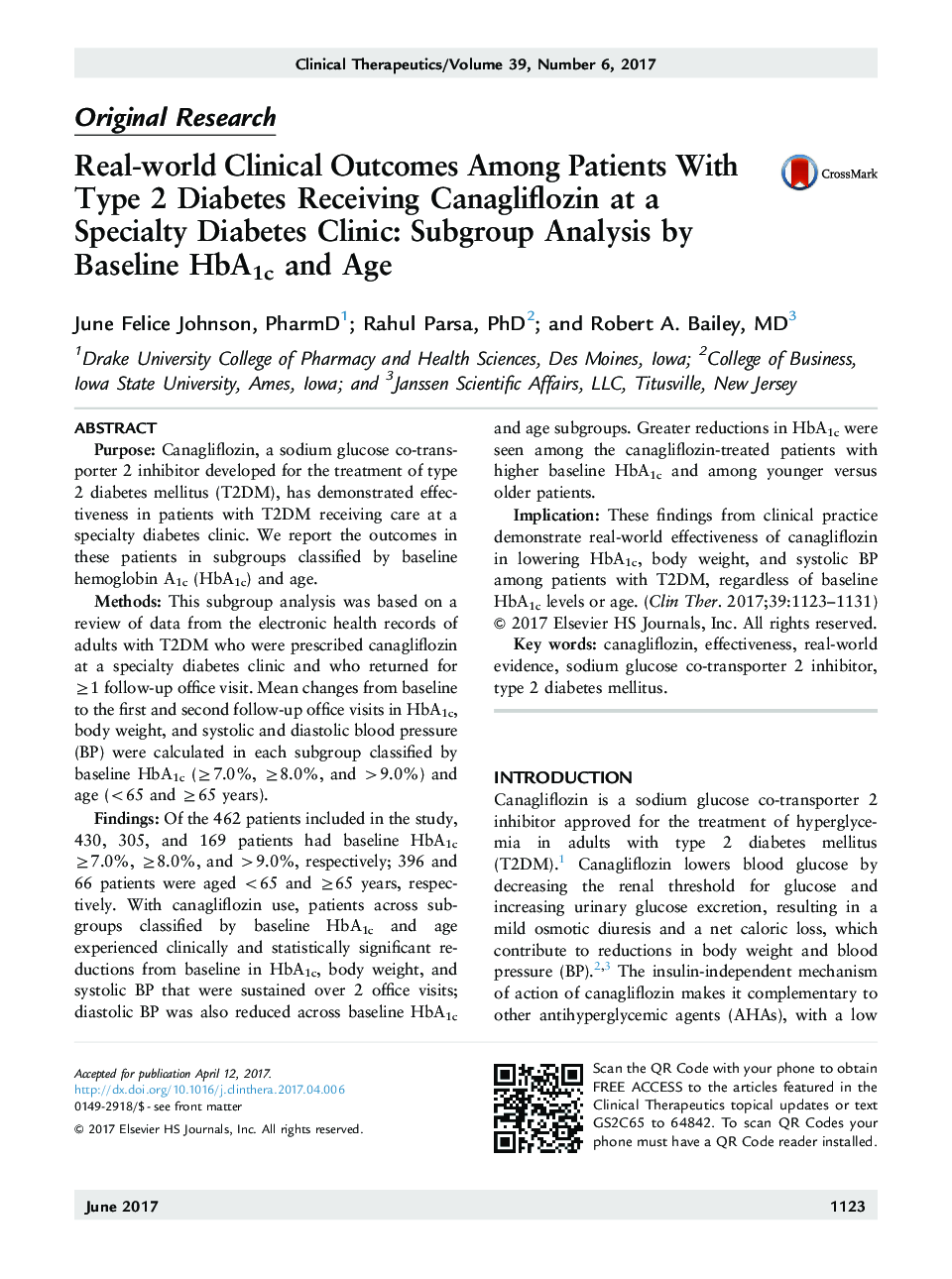| Article ID | Journal | Published Year | Pages | File Type |
|---|---|---|---|---|
| 5554100 | Clinical Therapeutics | 2017 | 9 Pages |
PurposeCanagliflozin, a sodium glucose co-transporter 2 inhibitor developed for the treatment of type 2 diabetes mellitus (T2DM), has demonstrated effectiveness in patients with T2DM receiving care at a specialty diabetes clinic. We report the outcomes in these patients in subgroups classified by baseline hemoglobin A1c (HbA1c) and age.MethodsThis subgroup analysis was based on a review of data from the electronic health records of adults with T2DM who were prescribed canagliflozin at a specialty diabetes clinic and who returned for â¥1 follow-up office visit. Mean changes from baseline to the first and second follow-up office visits in HbA1c, body weight, and systolic and diastolic blood pressure (BP) were calculated in each subgroup classified by baseline HbA1c (â¥7.0%, â¥8.0%, and >9.0%) and age (<65 and â¥65 years).FindingsOf the 462 patients included in the study, 430, 305, and 169 patients had baseline HbA1c â¥7.0%, â¥8.0%, and >9.0%, respectively; 396 and 66 patients were aged <65 and â¥65 years, respectively. With canagliflozin use, patients across subgroups classified by baseline HbA1c and age experienced clinically and statistically significant reductions from baseline in HbA1c, body weight, and systolic BP that were sustained over 2 office visits; diastolic BP was also reduced across baseline HbA1c and age subgroups. Greater reductions in HbA1c were seen among the canagliflozin-treated patients with higher baseline HbA1c and among younger versus older patients.ImplicationThese findings from clinical practice demonstrate real-world effectiveness of canagliflozin in lowering HbA1c, body weight, and systolic BP among patients with T2DM, regardless of baseline HbA1c levels or age.
